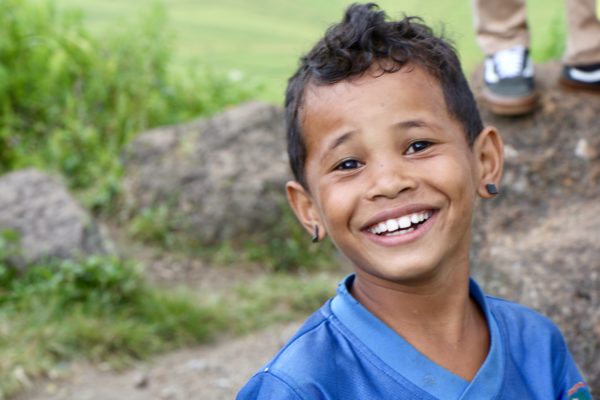Why Risk-Taking Must Overcome Emotion In Development Aid

The future of development aid and hope for the developing world lies in getting investment into the right hands. Photo courtesy of Fotolia.
Malala Yousafzai or Bello Eniola: which 15-year-old girl is more likely to become the future face of international development?
Malala is the young lady who was shot in the head by adult males in northern Pakistan because of her education-for-females activism. Right now there is a write-in petition to nominate her for the Nobel Peace Prize.
Bello is a Nigerian secondary-school student who, along with three friends, built a hydrogen pump that produces electricity from urine. The group presented it at Lagos’ Maker Faire.
The choice seems obvious. Malala risked her life to make her humanitarian point and suffered a fate that disgusts most humans. She has become an icon worldwide and received support from world leaders, including in England where she was taken for specialized medical care.
Bello and friends took a second-year-university chemistry experiment and created a science-fair project, albeit a sophisticated one.
But if you chose Malala, you’d probably be wrong.
The brutal attack made her today’s face of anti-intolerance and anti-poverty, a poster child for “how can this still happen?” fundraisers from Munich to Vancouver. Yet the image, however emotionally enduring, is rapidly becoming outdated.
It represents much of what is wrong with how the rich world tries to “fix” the poor world, demanding cultural change without offering workable alternatives, with the exception of debt-financed consumerism and Hollywood chimera. Malala’s Western-generated avatar is saying “Trust them, they have your best interests at heart. Look how nice they’ve been to me.”
Bello wanted to find a way to supply electricity to those students who have to suck in kerosene-lamp fumes if they want to study after dark. She didn’t hesitate to borrow the scientific principle from others, yet she also didn’t ask for money to do a feasibility study and probably didn’t have to bribe anyone to put the machine together.
Bello’s essence reflects how development aid needs to work in the future, an idea picking up steam so quickly that world leaders are echoing its rationale. This debate is about how to make aid produce greater benefits than it has in the past. Any resolution will require accepting more localized solutions as well as the unpredictability that comes with them.
This is discomforting to traditionalists because it promises to shake up aid’s status quo, and slice up a few administrative jobs in the process. It will also give local stakeholders more responsibility to make aid work. Whatever the future, the issue is about to get extremely complicated.
One danger here is to think that Bello’s surrogate for development is about entrepreneurialism as the only way forward – our much-loved “The Market Will Set You Free” hyperbole. But poor countries remain far too hampered by institutional dysfunction, corruption and 19th Century infrastructure to take seriously, just yet, as hives of budding businesspeople. Even projects like Nairobi’s iHub and Lagos’ CCHub may look pretty but haven’t produced access to capital.
In any economic structure, ideas mean nothing without investment and a willingness to accept, and learn from, failure. These are things that aid organizations typically avoid like leprosy because their own worlds are also minefields of uncertainty.
Yet it will be entrepreneurialism that helps Africa, as well as others, deal with development problems. If the history of aid – now cunningly renamed social capital – has taught us anything, it is that the only way to solve the problems of poverty is through market forces: not the kind that spawn hedge funds but those that create optimism by dispelling fear.
Despite U.S. President Franklin Roosevelt’s best sound bite ever, no one becomes less fearful just because they are told to. They must see proof that things are getting better, smell it and roll it around on their tongues. And when they see others around them believe it as well, the blinders come off. This rarely happens without at least one external catalyst.
“The idea that solutions must only be local is a double-edged sword,” says Firdaus Kharas, who for the past decade has helped provide tangible proof by creating mass communications projects that change health behaviours around the world.
“Local solutions are never the bottom line. If you look at the Gandhian ideal, this means being isolated, killing investment, and that is the last thing (the developing world) needs because (investment) is the only way to get out of poverty. That’s the problem with how aid works now; it isn’t allowing anyone to take control of their own life.”
Kharas says that one thing the international aid community has yet to understand is the rapid adoption of technology across Africa and Asia. He’s now working on projects to communicate the efficacies of solar power and mobile-health applications with companies like Nokero and iheed. Both understand that local solutions mean understanding local realities.
His Chocolate Moose Media has just partnered with Healthphone to make available about 1,500 multi-lingual versions of his three public-service-announcement series – No Excuses, The Three Amigos and Buzz and Bite – for the first time on cell phones.
Technology investment has alleviated more poverty in less time than any other sector in the developing world. Ask Mo Ibrahim. Any new theory of aid will incorporate this economic reality. Organizations like the Bellagio Initiative and Stars Foundation (among many others) are part of a trend that not only asks for more local accountability in funding but demands increased local investment in research and development, especially in science.
This means two things: in-country organizations will take on a lot more responsibility/accountability; and a lot more projects will fail in the quest for expertise. Yet for aid to have a greater effect, it must understand human nature – those who get the benefits must take the risks.
Which brings us back to the two young ladies we started with.
Malala’s case is unmistakably compelling. But it also butts heads with a cultural belief (educating women is not a good thing) that no amount of Nobel Peace Prizes can change. New thinking will only happen when those who hold that prejudice can let it go for something better. The best way to make that transition is by creating economic optimism (it happened in East Asia, why not elsewhere?).
Bello’s path is probably less altruistic. She and her friends had a great idea and figured they might make a little money as well as help out a few people without access to electricity. She attends a private school so it’s not likely she lives in poverty. But without anyone getting hurt, a young lady has been able to create a small ray of hope that just isn’t possible in the tribal zones of Pakistan.
If development needs a new image to replace the moribund structures of the past, shouldn’t it be one that people living in poverty can identify with?



